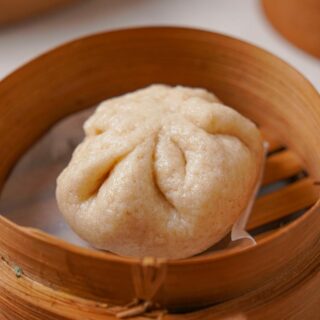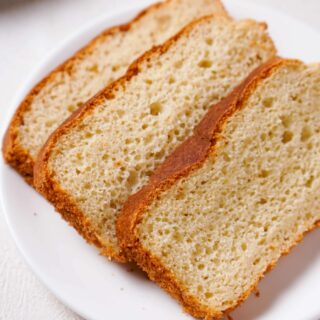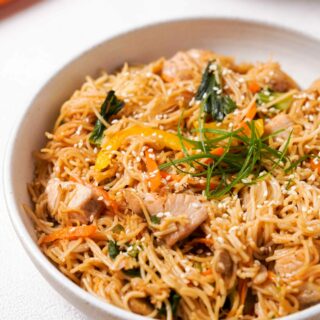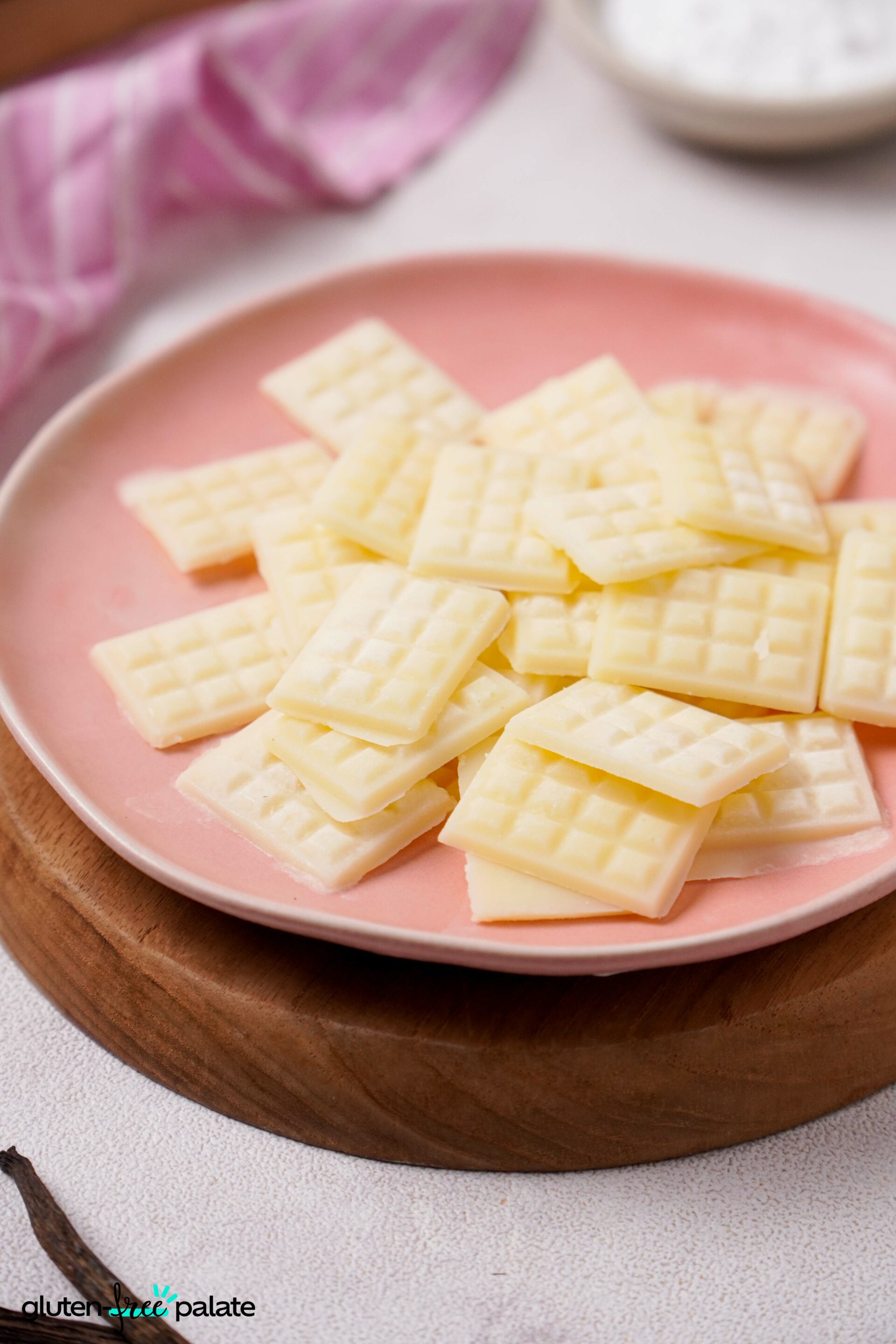Sushi is one of my favorite dishes. It’s healthy, wholesome, and made with good-for-you ingredients, like fish, crab, pineapples, and avocado. Nigiri and maki rolls were always my go-to dinner delivery option, but after discovering that I could no longer eat gluten, I had to rethink every ingredient of every meal.
So is sushi gluten-free? Unfortunately, the answer isn’t as simple as it seems. Read on to learn everything you need to know about ordering gluten-free sushi.
Is Sushi Gluten-Free?
Gluten-free sushi rolls absolutely exist. The base of sushi is rice, vegetables or fruit, and meat. None of these naturally contain gluten. However, wheat may be added to certain processed ingredients. These are the items to check before placing an order:
1. Fake Crab Meat
While fresh crab meat is naturally gluten-free, wheat may be used in imitation crab meat. On menus, this may be referred to as “surimi.”
2. Soy Sauce
Unfortunately, most soy sauces contain wheat. That said, many tamari sauces don’t. Always read the side of an ingredient label – and even consider bringing your own with you to the restaurant.
3. Sushi Rice
Just like all rice, sushi rice is naturally gluten-free. However, most sushi rice is soaked in rice vinegar (which makes it easier to roll).
4. Rice Vinegar
While some types of vinegar contain gluten (we’re looking at you, malt and non-distilled), Japanese rice vinegar is almost exclusively gluten-free. Respected sushi chefs use rice vinegar to make their sushi rolls, but be sure to ask what’s being used in the kitchen.
Note: If you’re concerned about the vinegar being used, you can always ask for plain rice or sashimi (which are high-quality slices of fish and seafood).
5. Tempura
The main ingredient in tempura flour is wheat, meaning that foods that are fried in a sushi restaurant are almost certainly cross-contaminated. Is there gluten in sushi with “crunchy” or “crispy” in their name? Almost certainly!
6. Wasabi
Traditional wasabi is absolutely gluten-free. However, the bright green paste most restaurants use contains plant starch. You’ll need to check the label to ensure that it’s either corn or wheat.
7. Marinades
Soy- and teriyaki-based marinades often contain gluten. Always ask restaurant staff to check whether the items were marinated first. Is eel sauce gluten-free? Almost never: Ask your server if you’re thinking about ordering the unagi (freshwater eel).
What Popular Sushi Rolls Are Gluten-Free?
When it comes to gluten-free sushi rolls, you’ve got plenty of options. As long as you’re aware of the ingredients we listed (above), you should be fine. Some of our favorites include:
- Salmon rolls
- Tuna rolls
- Philadelphia rolls (made with cream cheese)
- Vegetable rolls
Does My Favorite Sushi Roll Have Gluten?
The following sushi should almost exclusively be avoided by people with gluten sensitivities and celiac disease:
- California rolls (usually made with imitation crab)
- Teriyaki rolls (the sauce likely contains wheat)
- Tempura rolls (as well as anything listed as “crispy” or “crunchy”)
- Spider rolls (made with tempura)
Beginner’s Guide: How to Order Gluten-Free Sushi
If you’re buying cheap sushi from supermarkets or fast food restaurants, you’re almost certainly going to run into lower-quality ingredients (like imitation crab). And there’s also no guarantee that it’s been prepared in kitchens with strict cross-contamination measures.
A good rule of thumb: If you can’t speak directly with the people preparing your food, don’t eat their sushi.
Higher-end Japanese restaurants tend to use higher-quality ingredients, so we recommend spending a little more money to safely get your gluten-free sushi rolls.
Still, read through everything before popping that temaki roll into your mouth. Consider calling the restaurant to ensure that their sushi is gluten-free – and always tell staff about your dietary restrictions whether you’re ordering to-go or sitting down.
Related: Traditional Japanese food isn’t super reliant on wheat and other glutinous ingredients. Discover how to make Japanese sponge cake that’s delicious and incredibly gluten-free!
The Easiest Way to Eat Gluten-Free Sushi: Make It at Home!
As you cook more dinners at home, you’ll quickly discover that you can make gluten-free favorites of almost anything.
Making sushi at home sounds like an undertaking, but it really comes down to having the right tools, techniques, and practice. It’s a fun way to spend time with loved ones, looks impressive, and gives you full control over your ingredients.
Why not turn your kitchen into a Japanese restaurant with this showstopping gluten-free ramen!
Frequently Asked Questions
Is a California Roll Gluten-Free?
California rolls typically use surimi (imitation crab) that lists wheat flour in its ingredient list. Unless the restaurant clearly states – and guarantees – that they use fresh crab meat, we recommend against ordering California rolls
Does All Sushi Rice Have Gluten?
Like every variety of rice, sushi rice is naturally gluten-free. However, sushi rice is often soaked in vinegar to make it easier to roll. Some restaurants may resort to using other types vinegar that contains gluten, so be sure to ask staff before ordering.
What Sushi Is Usually Gluten-Free?
Traditionally, all sushi is considered gluten-free. This question becomes more complicated to answer when you add certain ingredients and preparation methods.
Does Sushi Soy Sauce Have Gluten?
Most tamari soy sauce is gluten-free. However, the majority of soy sauce used in restaurants does contain wheat. Be sure to ask restaurant staff for details, check the ingredient label, and even consider bringing your own gluten-free soy sauce with you.
Is Rice Vinegar Gluten Free?
Traditional rice vinegar is gluten-free. Just like any ingredient, be sure to check the label to ensure that it’s safe for a gluten-free diet.
Final Thoughts
So is sushi gluten-free? Simply put: It depends on the sushi roll and where you get it from. Contact your local Japanese restaurants to determine whether they can accommodate your dietary restrictions with gluten-free sushi – or simply make your own!
Whether you’ve been eating GF for years or are considering a switch, there’s no shortage of gluten-free cooking tips that will take your dishes to the next level.








Leave a Question or Comment